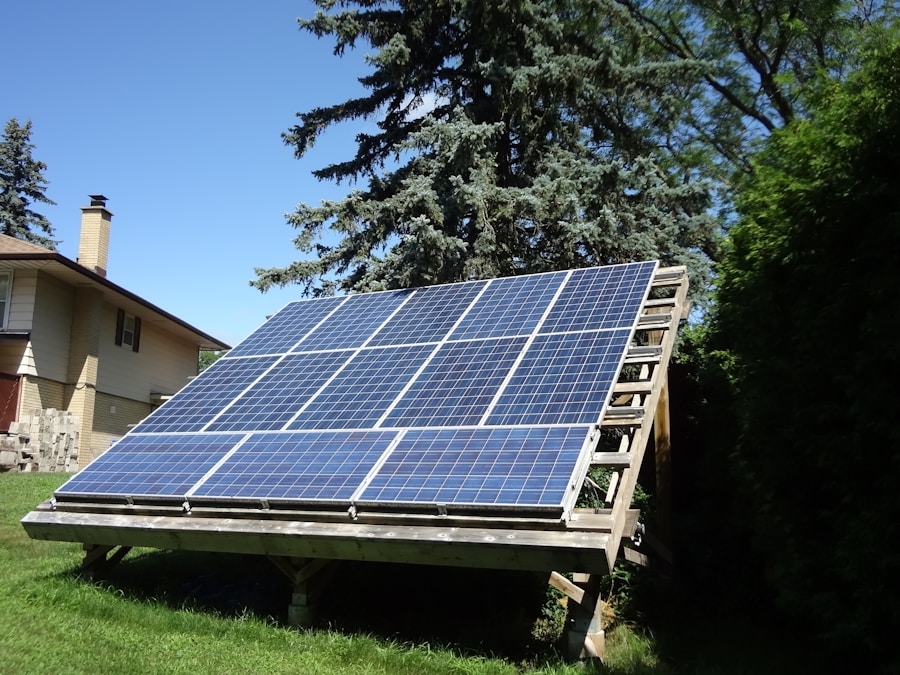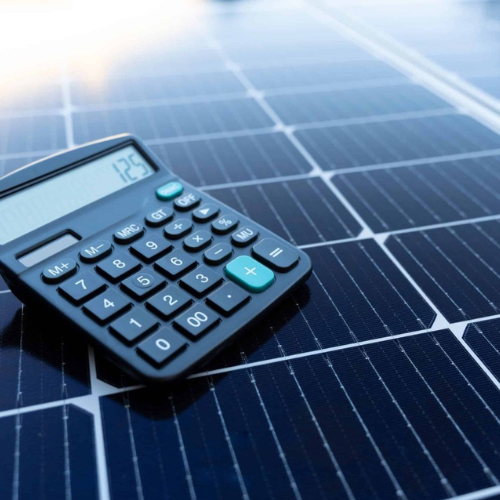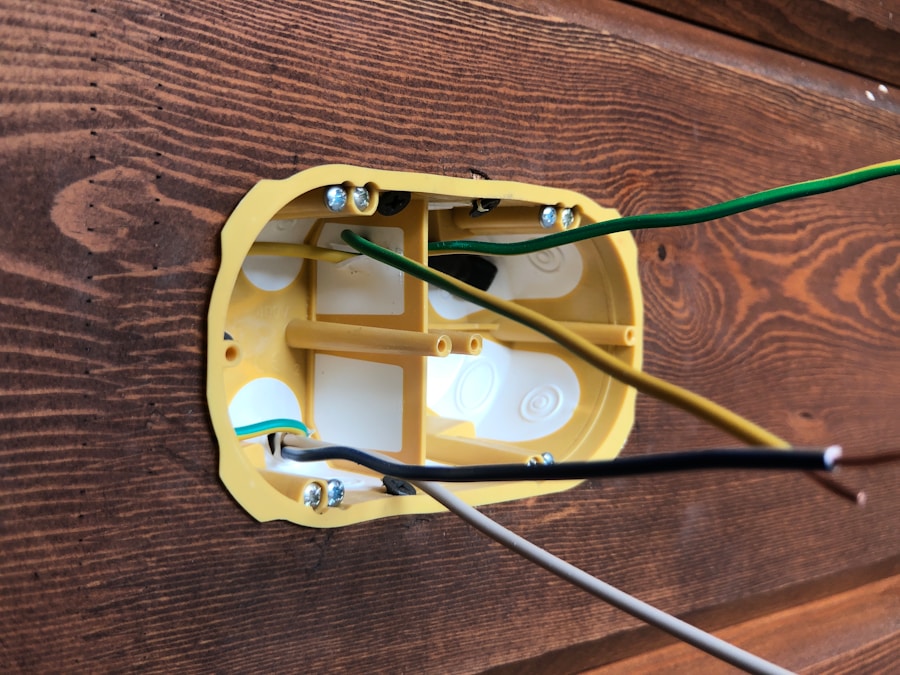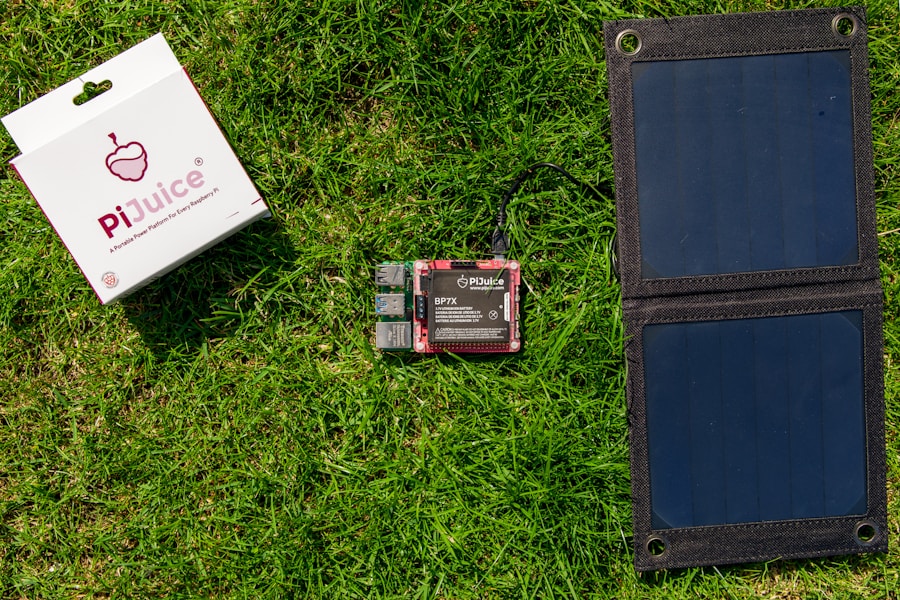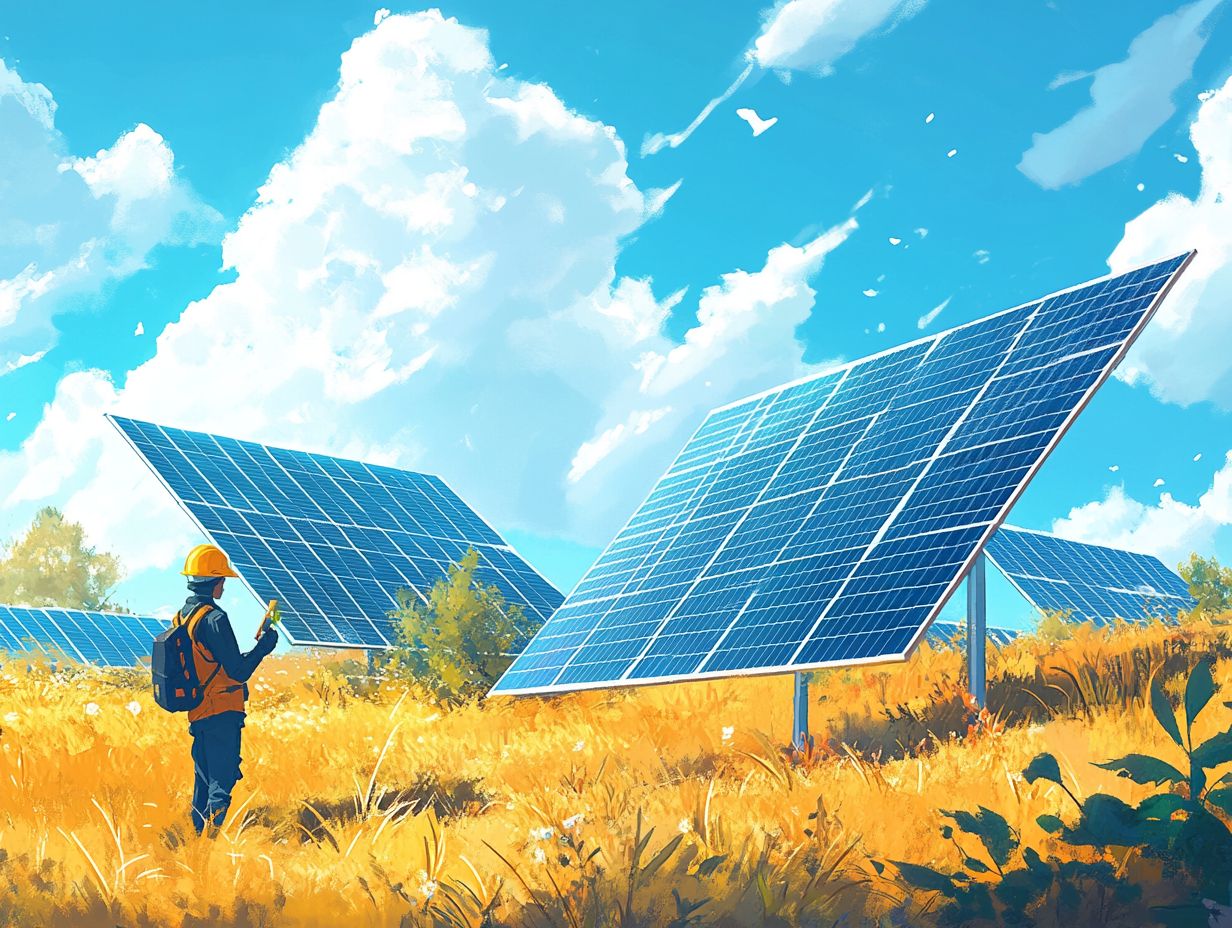Contents
- 1 Assessing Your Home’s Solar Potential
- 2 Choosing the Right Solar Panel System for Your Home
- 3 Installing Solar Panels on Your Roof
- 4 Connecting Solar Panels to Your Home’s Electrical System
- 5 Monitoring and Maintaining Your Solar Panel System
- 6 Maximizing the Benefits of Solar Energy
- 7 Exploring Incentives and Rebates for Solar Panel Installation
- 8 FAQs
- 8.1 What are the benefits of connecting solar panels to a house?
- 8.2 What equipment is needed to connect solar panels to a house?
- 8.3 How do I connect solar panels to my house’s electrical system?
- 8.4 What is the process for connecting solar panels to a house?
- 8.5 Are there any incentives for connecting solar panels to a house?
Solar panels are a remarkable technology that harnesses the sun’s energy to generate electricity. By converting sunlight into usable power, these panels provide a sustainable and renewable energy source that can significantly reduce your reliance on traditional fossil fuels. As you delve into the world of solar energy, you will discover that solar panels not only contribute to environmental conservation but also offer substantial financial benefits.
By investing in solar technology, you can lower your electricity bills, increase your property value, and even earn money through net metering programs. The benefits of solar panels extend beyond mere cost savings. They play a crucial role in reducing greenhouse gas emissions, which is vital for combating climate change.
By choosing to install solar panels, you are making a conscious decision to support clean energy initiatives and promote a healthier planet for future generations. Additionally, many regions offer incentives and rebates for solar panel installation, making it an even more attractive option for homeowners. Understanding these advantages is the first step toward making an informed decision about whether solar energy is right for you. Get your free solar assessment at https://www.solarenergy4u.org/free-pro-advice/.
Key Takeaways
- Solar panels convert sunlight into electricity, providing a clean and renewable energy source for your home.
- Assess your home’s solar potential by considering factors such as roof orientation, shading, and available space for solar panel installation.
- Choose the right solar panel system based on your energy needs, budget, and available incentives or rebates.
- Professional installation of solar panels on your roof is crucial for optimal performance and safety.
- Connect your solar panels to your home’s electrical system to start harnessing solar energy for your household needs.
Assessing Your Home’s Solar Potential
Rooftop Considerations
Start by considering the orientation and pitch of your roof. Ideally, a south-facing roof with a slope between 15 and 40 degrees will capture the most sunlight throughout the day. If your roof is shaded by trees or nearby buildings, it may limit the amount of sunlight your panels receive, which could impact their performance.
Climate and Weather Patterns
Another critical aspect to consider is your local climate. Areas with abundant sunshine will naturally yield better results from solar panels than regions with frequent cloud cover or rain. You can use online tools or consult with local solar providers to analyze historical weather data for your area.
Energy Consumption and System Sizing
Understanding your energy consumption patterns will help you determine the size of the solar system you need. By taking these factors into account, you can make a more informed decision about whether solar energy is a viable option for your home.
Choosing the Right Solar Panel System for Your Home

Once you have assessed your home’s solar potential, the next step is to choose the right solar panel system for your needs. There are several types of solar panels available on the market, each with its own advantages and disadvantages. Monocrystalline panels are known for their high efficiency and sleek appearance, making them a popular choice among homeowners.
On the other hand, polycrystalline panels are generally more affordable but may require more space due to their lower efficiency. In addition to the type of panels, you should also consider the inverter system that will convert the direct current (DC) generated by the panels into alternating current (AC) for use in your home. String inverters are commonly used for residential systems, but microinverters or power optimizers may be more suitable if your roof has shading issues or if you plan to expand your system in the future.
By carefully evaluating these options and consulting with a reputable solar installer, you can select a system that aligns with your energy needs and budget.
Installing Solar Panels on Your Roof
| Metrics | Data |
|---|---|
| Cost of solar panels | 10,000 – 30,000 |
| Energy production | 10 – 20 kilowatt-hours per square foot per year |
| Payback period | 5 – 10 years |
| Environmental impact | Reduces carbon footprint by 3,000 – 4,000 pounds per year |
| Roof space required | 100 – 400 square feet per kilowatt |
The installation process of solar panels is a crucial phase that requires careful planning and execution. It typically begins with a site assessment by a professional installer who will evaluate your roof’s structure and determine the best placement for the panels. This step is essential to ensure that the installation complies with local building codes and regulations.
Once the assessment is complete, the installer will prepare your roof by reinforcing it if necessary and ensuring that it can support the weight of the solar panels. After preparing your roof, the actual installation process begins. The installer will mount the solar panels using brackets or rails, ensuring they are securely attached and positioned for optimal sunlight exposure.
This process may take a day or two, depending on the size of your system and any additional features you may have chosen, such as battery storage or monitoring systems. Once installed, the system will undergo testing to ensure everything is functioning correctly before being connected to your home’s electrical system.
Connecting Solar Panels to Your Home’s Electrical System
Connecting your newly installed solar panels to your home’s electrical system is a critical step that allows you to start reaping the benefits of solar energy. This process typically involves integrating an inverter that converts the DC electricity generated by the panels into AC electricity that can be used in your home. The inverter is usually installed near your main electrical panel for efficiency and ease of access.
Once connected, your solar system will work in tandem with your existing electrical setup. During daylight hours, when sunlight is abundant, your solar panels will generate electricity that powers your home directly. Any excess energy produced can be sent back to the grid, often resulting in credits on your utility bill through net metering programs.
Understanding how this connection works will help you maximize your energy savings and ensure that you are making the most of your investment in solar technology.
Monitoring and Maintaining Your Solar Panel System
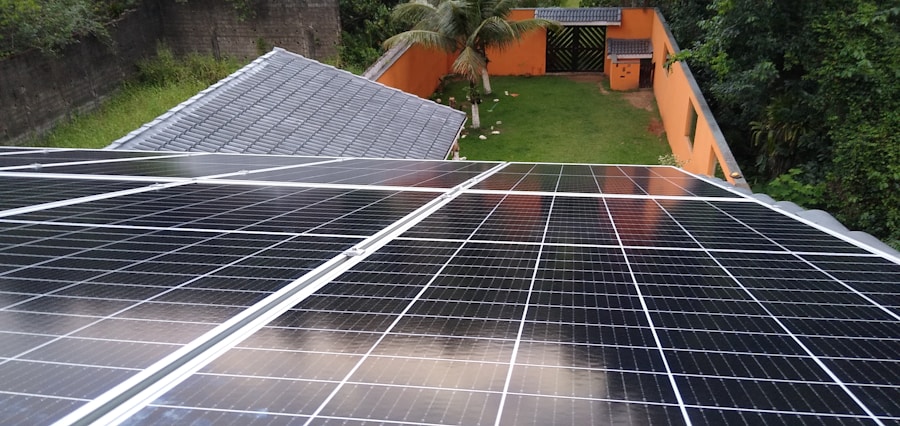
Real-Time Monitoring for Optimal Performance
After installation, monitoring and maintaining your solar panel system is essential to ensure its longevity and efficiency. Many modern systems come equipped with monitoring software that allows you to track energy production in real-time via a smartphone app or web portal. This feature enables you to identify any potential issues early on, such as decreased performance due to shading or dirt accumulation on the panels.
Regular Maintenance for Maximum Efficiency
Regular maintenance is also crucial for keeping your system in optimal condition. While solar panels require minimal upkeep compared to other home systems, it’s still important to clean them periodically to remove dust, debris, or bird droppings that could obstruct sunlight. Additionally, scheduling annual inspections with a qualified technician can help identify any wear and tear on components like inverters or wiring before they become significant problems.
Proactive Maintenance for Long-Term Savings
By staying proactive about monitoring and maintenance, you can ensure that your solar investment continues to pay off for years to come.
Maximizing the Benefits of Solar Energy
To truly maximize the benefits of solar energy, consider implementing energy-efficient practices within your home alongside your new solar panel system. Simple changes such as upgrading to LED lighting, using energy-efficient appliances, and improving insulation can significantly reduce your overall energy consumption. By lowering your demand for electricity, you can increase the amount of surplus energy generated by your solar panels, leading to greater savings on your utility bills.
Additionally, consider investing in battery storage solutions if they are available in your area. Battery systems allow you to store excess energy generated during sunny days for use during nighttime or cloudy periods when production may be lower. This capability not only enhances your energy independence but also provides backup power during outages.
By combining these strategies with your solar panel installation, you can create a comprehensive approach to energy management that maximizes both savings and sustainability.
Exploring Incentives and Rebates for Solar Panel Installation
One of the most compelling reasons to consider installing solar panels is the array of incentives and rebates available at both federal and state levels. The federal government offers a tax credit known as the Investment Tax Credit (ITC), which allows homeowners to deduct a significant percentage of their solar installation costs from their federal taxes. This incentive can substantially reduce the upfront cost of going solar, making it more accessible for many homeowners.
In addition to federal incentives, many states offer their own programs designed to encourage renewable energy adoption. These may include cash rebates, property tax exemptions, or performance-based incentives that reward homeowners for generating clean energy over time. Local utility companies may also provide incentives such as rebates for installing energy-efficient appliances or additional credits for participating in net metering programs.
By thoroughly researching these opportunities and working with knowledgeable installers who understand local regulations, you can take full advantage of available incentives and make your transition to solar energy even more financially beneficial.
If you are interested in learning more about the different types of solar panels available for your home, check out this informative article on solar panel types. Understanding the various options can help you make an informed decision when it comes to connecting solar panels to your house. Additionally, if you are looking to save money with solar energy, be sure to read this article on saving big with solar energy. It provides valuable tips on how to maximize your solar savings and reduce your energy costs over time.
FAQs
What are the benefits of connecting solar panels to a house?
Solar panels can help reduce electricity bills, decrease reliance on non-renewable energy sources, and lower carbon footprint. They can also increase the value of a home and provide energy independence.
What equipment is needed to connect solar panels to a house?
To connect solar panels to a house, you will need solar panels, mounting hardware, an inverter, wiring, and a solar charge controller if using batteries. Additionally, you may need a permit from your local government and an interconnection agreement with your utility company.
How do I connect solar panels to my house’s electrical system?
To connect solar panels to a house’s electrical system, the DC output from the solar panels is connected to an inverter, which converts the DC power to AC power. The AC power is then connected to the house’s electrical panel through a dedicated breaker. It is important to hire a qualified electrician to ensure the system is installed safely and in compliance with local building codes.
What is the process for connecting solar panels to a house?
The process for connecting solar panels to a house involves determining the best location for the panels, obtaining necessary permits and agreements, installing the panels and mounting hardware, connecting the panels to the inverter, and then connecting the inverter to the house’s electrical system. It is important to work with a reputable solar installer to ensure the process is done correctly.
Are there any incentives for connecting solar panels to a house?
Many governments offer incentives for installing solar panels, such as tax credits, rebates, and net metering programs. These incentives can help offset the initial cost of installing solar panels and make them more affordable for homeowners.

